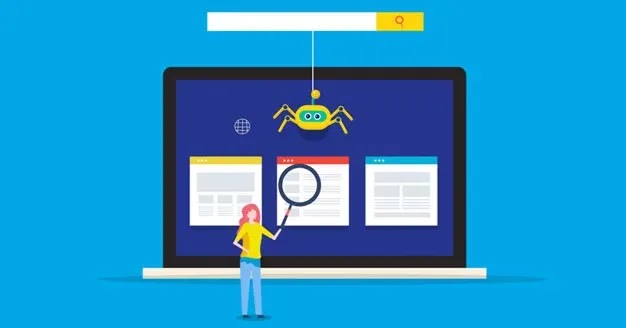What is Rebranding? Understanding the Process and Timing for Your Business
Welcome to our latest blog post where we delve into the concept of rebranding. If you've ever wondered, "what is rebranding?" and how it could apply to your business, you're in the right place.
Rebranding is more than just a change in your company's logo or name. It's a comprehensive process that involves altering various elements that constitute your company's brand. This post will provide an in-depth understanding of what rebranding is, how it's executed, and the ideal time to consider it.
What is rebranding?
Every company has a unique brand, recognizable through its logo, name, and the words and phrases it uses. These elements come together to create a brand identity. So, what is rebranding? It's a deliberate shift that crafts a new image for the company, enhancing its market recognition. This change could involve the logo, name, visual identity, slogan, vision, mission, and target audience. The ultimate goal of rebranding is to differentiate from competitors and attract new customers.
Why Companies Choose to Rebrand
We exist in an era of rapid change and improvement, making it vital for businesses to stay on top of trends. There are numerous reasons why companies decide to rebrand. Here are a few:
- Changes are necessary for growth - Changes are a double-edged sword because, in most cases, they are tough to implement, but they can certainly bring success to the business. Growth and prosperity require changes, but when they are implemented - the company can reach new customers, which is one of the biggest goals of rebranding.
- Changes in the market - Markets are constantly changing and improving. The company's brand must therefore be in line with the innovations and, by extension, the expectations of the interested parties. Rebranding can also be a smart option if the company is entering a new market.
- New management, focus, and design - Due to the change in the company's management, it is of crucial importance that the brand's identity is aligned with the new developments. The brand design must adapt to changes and be in line with the new management's priorities because it represents the company's identity, including its business practices, objectives, and focus.
- Competition - In the constant battle with competition, rebranding can serve as a great weapon. It allows us to surpass the competition and be unique in the market.
- Repositioning - Rebranding, in this case, should signal a new focus, a change in the direction of the company's operations, as well as new strategies and attitudes. Companies generally reposition their business to attract new customers, and, in this case, rebranding is of great help.
- Outdated image -This is one of the frequent reasons why companies decide to rebrand. The company logo is old-fashioned, as are other parts of the visual identity. An outdated image does not present your new products and services, thus, targeting new customers is not possible.
An integral part of the rebranding process is identifying the customer profile and conducting market research. Once we understand the target group, the competition, and the market situation, it becomes easier to identify areas for improvement and redesign.
The Rebranding Process
Rebranding is a complex process that consists of several stages. You may
learn more about the fundamental steps of the rebranding process in the
remaining text.
- Analysis: The first stage in the rebranding process is the analysis. The Analysis represents the foundation of this process because the others are built concerning it. This phase includes an assessment of previous operations, decisions, interested parties, the market, and the competition to determine whether there is room for improvement based on the information obtained. The Analysis is the cause of the change in the company's brand.
- Planning: The planning phase is one of the most extensive, as it includes decision-making based on analyses and consists of a set of different activities. These activities contain repositioning, renaming, and redesigning before starting to communicate the new brand. The company makes decisions about where the change will be made, in what part, at what level, and whether it will be bigger or smaller. At this point, we also want feedback from customers and other interested parties because, on occasion, the company is unable to identify defects on its own. They may be an enormous help to us.
- Application: This phase represents the implementation of the new brand, which was planned in detail during the previous stage.The implementation of the new brand has a double character. First, the new brand is presented to internal parties - management, executives, and other employees through brochures, newspapers, meetings, workshops, etc.After the internal parties accept the new brand, it is launched to the general public. This method of launching a new brand was chosen since rebranding is an expensive process that needs to be carefully considered before it is made public.
- Evaluation: The evaluation phase represents the measurement of the success of the changes that have been introduced. Monitoring the success and response of stakeholders to a new brand is a complicated process - and it is suggested to measure the success of the set goals.
The Risks of Rebranding
Rebranding itself carries risks. Companies should understand why rebranding is an essential process for their business. If you comprehend the importance of rebranding, then taking certain risks should not be a big problem for you. Here are some risks you may face during this process:
Change brings chaos
Introducing changes can be a big problem for the company, employees, and
customers. The reason for this is the habits of the existing brand,
characteristics, and way of doing business. During this process -
communication is crucial to make the rebranding as painless as possible.
Loss of clients
As we have already mentioned, change can sometimes be more difficult
than it seems, not only for the company - but also for the stakeholders.
Buyers of products or users of services are people who are used to your way of
doing business and your existing brand.
If the rebranding - is not
carried out in such a way as to minimize the potential loss of client trust,
then we cannot say that it was successful. Of course, there is always a risk
of losing a client when it comes to rebranding.
To avoid this, in addition to the fundamental planning of the rebranding
process, it is also necessary to familiarize the clients with the new brand
and inform them about the implemented changes and reasons for them.
Inefficient distribution of funds
Investing in rebranding can be one of the most profitable ventures for
your business. However, when companies plan to implement rebranding, in most
cases, they forget that the last step of the process is communicating the
brand change, as well as informing interested parties about the new brand.
If you set aside resources for the rebranding itself, and in that
calculation, you do not include funds for the promotion of the new brand. It
can be a big problem because, without the advertising of the new brand, the
interested parties will not be familiar with the novelties.
Rebranding is an expensive process - so the irrational
distribution of funds can cause significant risk and threaten the business.
Examples of rebranding
We have devoted this part to examples from practice, which may be helpful to you. It is necessary to do an analysis and a plan before implementing the rebranding process. But with practical examples, we can see some good moves on the one hand or wrong decisions on the other.
Successful Rebranding Process Examples
DropBox
At the beginning of the business, DropBox had a very functional design
because they relied solely on their product to gain market share. As the
business grew over time, it outgrew the vision that was created at the
beginning.
Through various checks and market research - they
realized that their platform is used by companies, and other interested
parties, so a rebranding had to happen.
Through this process, they
got a simpler logo and more colorful illustrations of the brand, which
represented a great refresh for the brand image. DropBox created a microsite
explaining the rebranding's reasoning and procedure to help the general public
become familiar with the changes.
In addition, they launched many
digital and TV commercials, with which they informed interested parties about
novelties.
Apple
This company's rebranding serves as an excellent illustration of how that
procedure should be carried out. In the beginning, Apple was a company known
for its computers. However, as the market demanded more and more, they
expanded their business to other segments.
They represented
innovators in all spheres of technology, and because of that, people
especially perceived them. As for the design, the logo has been changed so
that the "apple" has become monochrome.
This redesign gave the
impression of a modern and sophisticated image of the company. Also, they
removed the word "computer" from the name, considering that they expanded
business - so the old name was not in line with the products and services they
offer.
Unsuccessful Rebranding Process Examples
Calendly
The rebranding of this company was long awaited. It was decided to change the design of the entire website, as well as the logo. The problem arose with the redesigned logo because according to user comments, it resembled a toilet bowl. The new logo cost the company $1.5 million and perhaps more in its reputation after its release.
MasterCard
The authentic logo of this company was redesigned in 2015. The reason
for this was the company's opinion that it was necessary to rebrand because
people associate "Mastercard" with two colored circles.
Additionally, they believed that the logo would still be
recognized even after the addition of new elements to the circles. With
the redesign, the name of the company, which was normally imprinted in the
center of the logo, was moved, and also another circle was added.
This move confused consumers, who were already used to the
company's initial logo. Immediately after publishing the new logo, the
Mastercard company realized that it was a mistake and that it was necessary to
correct it.
It was decided to return the old logo without the
imprinted company name in the center.
Conclusion
Rebranding can be carried out in any period of the company's operations. For the entire process to be successful, it is necessary to determine the needs for which the rebranding process is being carried out and look at the situation objectively.
I hope that this text has helped you better understand the reasons for rebranding and how you can implement it.
If you found this article interesting and helpful, share it with your friends on Facebook and other social networks.
Thank you for taking the time to read this article!











